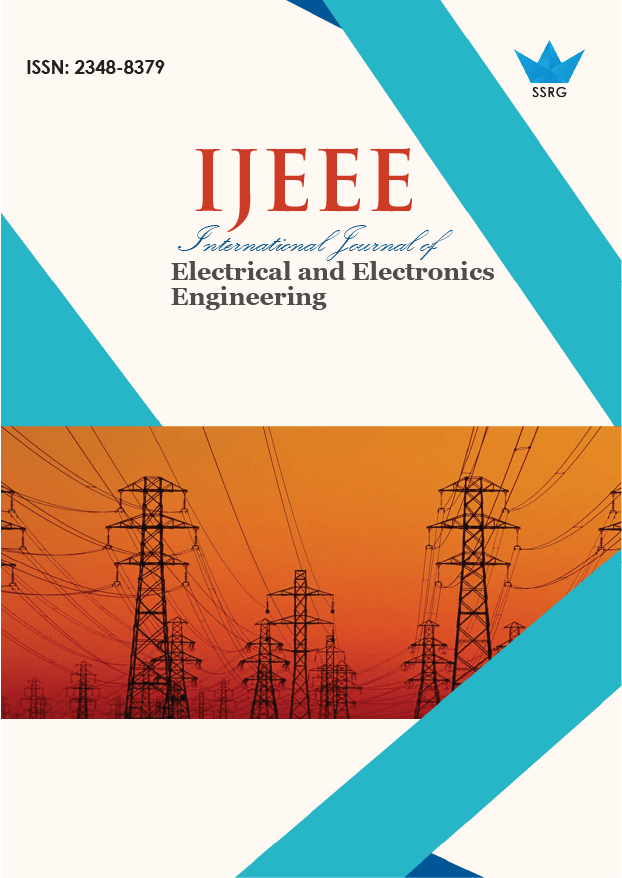Assisted Pedestrian Crossing System for Visually Impaired People Through Machine Vision Recognition and LoRa Communication

| International Journal of Electrical and Electronics Engineering |
| © 2025 by SSRG - IJEEE Journal |
| Volume 12 Issue 9 |
| Year of Publication : 2025 |
| Authors : Christian Raul Castro Choque, Kennyi Lucio Aro Apaza, Raúl Ricardo Sulla Torres |
How to Cite?
Christian Raul Castro Choque, Kennyi Lucio Aro Apaza, Raúl Ricardo Sulla Torres, "Assisted Pedestrian Crossing System for Visually Impaired People Through Machine Vision Recognition and LoRa Communication," SSRG International Journal of Electrical and Electronics Engineering, vol. 12, no. 9, pp. 11-20, 2025. Crossref, https://doi.org/10.14445/23488379/IJEEE-V12I9P102
Abstract:
This article presents the design and implementation of a pedestrian crossing system focused on people with visual impairments. The proposed solution combines artificial vision using a customized YOLOv5 model with wireless communication between the system and a smart cane based on LoRa technology. It begins with a crossing request when the user approaches a traffic light equipped with the system within a set range. Upon receiving this request, an ESP32-CAM module captures an image and communicates with a PC running the YOLOv5 program to detect the presence of people with the following characteristics: a person with a cane that integrates a LoRa-compatible device and dark glasses. Communication between the ESP32 microcontroller and the PC is carried out via the UART port, ensuring low-latency interaction. The system offers a cost-effective, scalable, and inclusive solution for smart city environments, improving the mobility and autonomy of people with visual impairments. After implementation, a 60% reduction in incidents at high-risk intersections and urban accessibility is estimated.
Keywords:
Smart cane, LoRa communication, Visual impairment, YOLOv5 object detection, Intelligent pedestrian crossing.
References:
[1] Noori Bnilam et al., “AoA-Based Localization System using a Single IoT Gateway: An Application for Smart Pedestrian Crossing,” IEEE Access, vol. 9, pp. 13532-13541, 2021.
[CrossRef] [Google Scholar] [Publisher Link]
[2] Golam Mohammad Rabbani et al., “Enhancing Pedestrian Safety and Urban Mobility through IoT-Based Smart Pedestrian Crossings,” 2025 International Conference on Electrical Computer and Communication Engineering ECCE, Chittagong, Bangladesh, pp. 1-6, 2025.
[CrossRef] [Google Scholar] [Publisher Link]
[3] Saqib Zafar et al., “Advancement in Smart Cane Technology: Enhancing Mobility for the Visually Impaired using ROS and LiDAR,” 2024 6th International Conference on Robotics and Automation in Industry Icrai, Rawalpindi, Pakistan, 2024.
[CrossRef] [Google Scholar] [Publisher Link]
[4] Vinoth Kumar K et al., “A Review Investigation on Current Trends in Smart Unsighted Cane Technology” 2024 Proceedings of the 9th International Conference on Communication and Electronics Systems Icces, Coimbatore, India, pp. 1417-1420, 2024.
[CrossRef] [Google Scholar] [Publisher Link]
[5] Fatima-Zahra Dahak, and Nicolas Saunier, “Assessing the Safety of Cyclist-Pedestrian Interactions in Seasonal Pedestrian Streets using Computer Vision Techniques,” Transportation Research, vol. 2679, no. 5, pp. 219-231, 2025.
[CrossRef] [Google Scholar] [Publisher Link]
[6] Roberto Ventura et al., “Using Computer Vision and Street-Level Videos for Pedestrian-Vehicle Tracking and Behaviour Analysis,” Transportation Research Interdisciplinary Perspectives, vol. 30, 2025.
[CrossRef] [Google Scholar] [Publisher Link]
[7] Tuğçe Elçi et al., “Pedestrian Equipment Anomaly Detection with Computer Vision in Warehouses,” Proceedings of the 10th World Congress on Electrical Engineering and Computer Systems and Science (EECSS'24), Barcelona, Spain, 2024.
[CrossRef] [Google Scholar] [Publisher Link]
[8] Monika, Pardeep Singh, Satish Chand, “Computer Vision-Based Framework for Pedestrian Movement Direction Recognition,” Journal of Intelligent and Fuzzy Systems, vol. 44, no. 5, pp. 8015-8027, 2023.
[CrossRef] [Google Scholar] [Publisher Link]
[9] Zhaohua Ji et al., “Optimization Model for Wireless Charging and Power Saving of Smart Canes for the Visually Impaired based on DRL” Ain Shams Engineering Journal, vol. 16, no. 7, 2025.
[CrossRef] [Google Scholar] [Publisher Link]
[10] Yingqun Liu et al., “Design Research on Smart Cane of YOLOv5s-Based Image Recognition and Vibration Feedback,” 2025 5th International Conference on Consumer Electronics and Computer Engineering (ICCECE), Dongguan, China, pp. 504-510, 2025.
[CrossRef] [Google Scholar] [Publisher Link]
[11] Jonghyun Kim, “Multi-Sensory Feedback-Assisted Low-Cost Smart Walking Cane Forming a Wearable Assembly for Blind People,” Journal of Sensor Science and Technology, vol. 34, no. 1, pp. 27-36, 2025.
[CrossRef] [Google Scholar] [Publisher Link]

 10.14445/23488379/IJEEE-V12I9P102
10.14445/23488379/IJEEE-V12I9P102